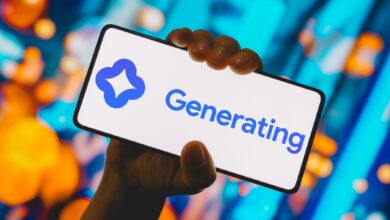How PwC is using GenAI to transform business value: PwC

5 guidelines for delivering transformative value
Unlike traditional AI, a single GenAI model can deliver results in multiple tasks in multiple functions and lines of business. For example: One suitably trained and governed GenAI model could help knowledge workers everywhere in your company — in tax, legal, finance, HR and more — access, organize, analyze and act on data. This scalability can lead to remarkable return on investment (ROI). And because GenAI often can make sense of unstructured data, such as phone calls and online activity logs, it can transform activities that traditional AI couldn’t. The result can be such significant productivity gains that — when combined with new ways of working —new business models become not just possible, but inevitable.
Based on our daily work with AI and GenAI in-house and with clients, as well as our ongoing research and our alliances with major AI technology providers, we have identified five guidelines that can help drive both near-term ROI and longer-term business model reinvention.
Choose use cases to enable rapid value and scale
The most impactful use cases for GenAI have two traits in common: They deliver value quickly and can be scaled rapidly across your organization.
A rapid path to value requires a clear value proposition that your data, tech stack and security environment can deliver — with functional, sector, risk and technology teams all aligned in supporting it. Scalability comes from a key GenAI differentiator: Most GenAI use cases fall within six repeatable patterns.
Consider the pattern of “deep retrieval:” training a GenAI model to search for specific information within documents or data. If you successfully train GenAI to extract key terms from your customer communications, you can then train that same model to do the same for contracts, tax regulations, financial reports, employee resumes, social media posts and more. That can lead to exponential value creation.
Advance GenAI and data at the same time
When you and your competitors are using similar GenAI foundation models, what will give you an edge? The answer: data. With relevant, reliable, compliant, secure and proprietary data, you can customize GenAI models with your in-house experience and intellectual property.
You don’t have to complete your data modernization to get started with GenAI. You can advance in stages, with each stage enabling GenAI to unlock new value from data. This approach can help you win stakeholder buy-in for previously out-of-reach data initiatives.
GenAI offers another bonus: It can let you tap into data that may be “trapped” in old strategy decks and customer communications. Previously, organizing this data might have required thousands of employee hours. Now GenAI can partly automate the process, cutting costs and shortening a path to value.
Upskill and reinvent how you work
With GenAI, you usually don’t have to recruit many new AI specialists. That’s because — unlike traditional AI — you won’t typically build your own GenAI models. To use vendor-licensed models to deliver high-value, risk-managed outputs, your people may need upskilling — such as we have done at PwC with our My AI initiative. You may also need to cross-train some of your current technology team to help oversee and customize GenAI.
To unlock even more value, rethink how work gets done. What else can your people do when a GenAI assistant does simple work for them — and provides data and leading practices to support higher-value work? Consider new ways to empower innovation. Since GenAI is so accessible, anyone in your company could — with the right skills and guardrails — use it to create new products, services and operational efficiencies.
Accelerate AI initiatives with Responsible AI
Responsible AI shouldn’t hold back AI initiatives — it should accelerate them. With trust built into AI from Day One, you’ll likely avoid delays and do-overs to close vulnerabilities or meet new requirements. With stronger trust in your AI among stakeholders, you’ll get broader buy-in for AI initiatives.
Our Responsible AI toolkit builds on prepared frameworks, templates and code-based assets. It covers strategy, governance, controls, cybersecurity, upskilling and more. It’s designed to reduce bias in AI models, increase reliability, enable compliance, safeguard data and protect privacy.
Critically, our Responsible AI is tech-powered but human-led: It not only gives people the tools and skills to oversee AI and manage its risks but also has well-informed people in control, making any high-risk and high-value decisions that involve AI.
Future-proof your AI with an open architecture
We’re still in the early days for GenAI: The technology is evolving rapidly. That’s why no successful AI initiative can be one-and-done. Instead, it should set you up to take advantage of whatever innovations come next.
That’s why at PwC we have a production mindset and platform-agnostic, “open architecture” approach, for ourselves and our clients. We work with the whole AI ecosystem, and we recommend that our clients be prepared to do the same.



